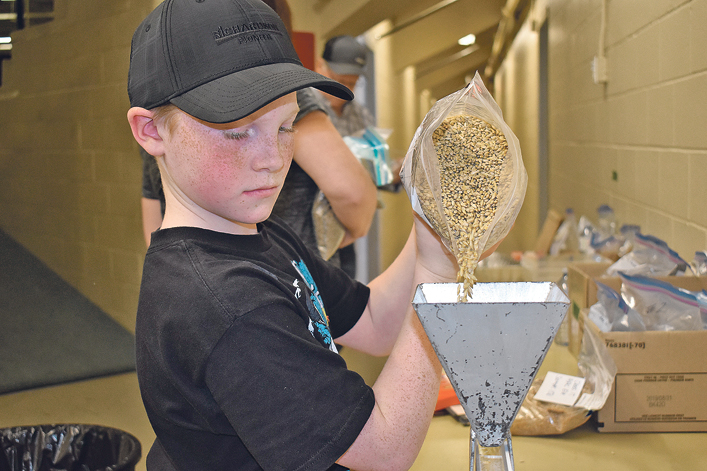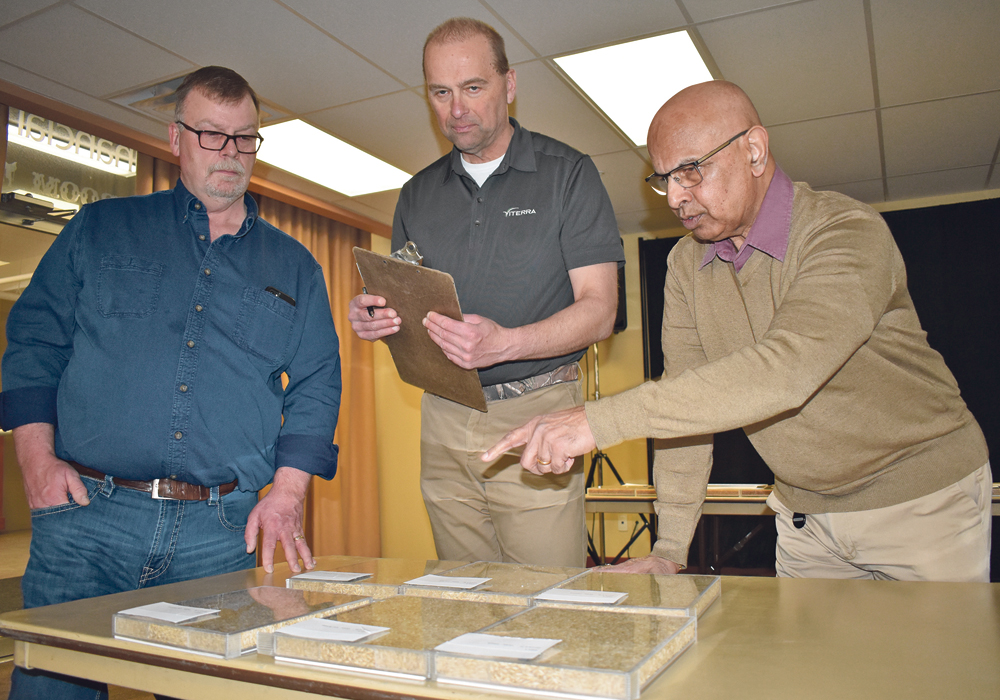In a fluorescent-lit room at Lethbridge Exhibition Park, three men closely scrutinize dozens of seed samples.
Heads bent to the task, they assess numerous varieties of seed for soundness, plumpness and colour, and check for the presence of weed seeds, other useless matter and disease. Then they score each sample and identify the best of the best.
It is time consuming work, but Brian Tamminga, Rick Czarny and Surya Acharya volunteer their time. That time is vital to the continuing success of the North American Seed Fair, now in its 122nd year of operation.
Read Also

More factors affecting winter weather
When you combine a weak La Niña, early Siberian snow, and a warm northern Pacific, it’s easy to see why long-range winter forecasting is so complex.
The seed fair is a perennial part of Ag Expo, the region’s largest annual agricultural fair that draws thousands of exhibitors and visitors each year. Winning entries in the seed fair will be on display at the event Feb. 27-March 1.
This is Tamminga’s 14th or 15th year as a judge for the seed fair. As manager of the County of Lethbridge Seed Cleaning Co-op for the past 30 years, he knows quality seed when he sees it.
During the judging process, he sees it quite often.
“Most of the samples that have been submitted, for the year they are submitted in, they’re all fairly consistent. They are good samples for sure,” he said during a brief lull in his judging duties Feb. 20.
Seed quality depends to a large extent on weather during the growing season, and last year’s dry conditions may have affected entries. Even so, good samples seem to come to the fore, he said.
“I know that the overall samples are down. We used to do this with five or six judges where there were three and four hundred samples and now we’re down to 160. Last year there were just over 200. Could be weather related.”

Tamminga and Czarny, who works for Viterra, have been judging together for 12 or 13 years. They were joined this year by Acharya, a research scientist and forage breeder with Agriculture Canada.
Shay Isleifson, a key member of the seed fair committee, said pedigreed seed is the heart of the competition.
“We focus on pedigreed seed with the adults, and then we have youth classes, so the kids get involved. They hand screen or clean their samples from Mom and Dad’s farm,” she said.
Part of her job is to organize preparation of the samples ready for judging, a process that requires her to marshal various volunteers the day before judging.
Cereals, pulse crops, forage seed and forage are the main classes. There is also a seed cleaning plant competition and selection of a winner for the Edwin Kiffiak Memorial Award, presented for excellence in the field of pedigreed seed.
Kiffiak of Foremost, Alta., established a seed business in that area and was a strong supporter of the annual seed fair.
















